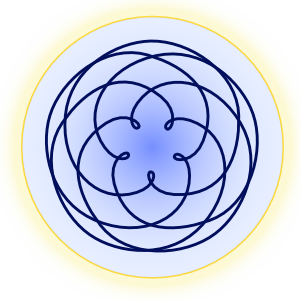The Great Pyramid of Giza
The Great Pyramid of Giza (also known as the Pyramid of Khufu or the Pyramid of Cheops) is the oldest and largest of the three pyramids in the pyramid complex bordering present-day Giza in Greater Cairo, Egypt. Conventional historians claim that it was allegedly built around 2560 BC as a tomb for Fourth Dynasty Egyptian pharaoh Khufu (or Cheops) by moving huge stones from a quarry and dragging and lifting them into place. Those claims are not plausible to several researchers and there is much more in those pyramids than historians are willing or able to grasp.
Published on May 27, 2021
The Great Pyramid of Giza is considered the oldest of the Seven Wonders of the Ancient World1, and the only one to remain largely intact. The general view of conventional science is that all ancient civilizations, in comparison to us, were primitive, much less advanced, and had basically no understanding of what nature is, since they had a mystical, unscientific attitude and perception of reality. However, the pyramid presents to modern man a very hard problem to solve, in many ways.
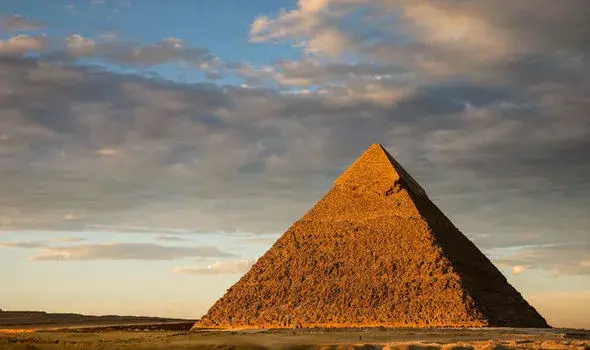
Main characteristics
The Great Pyramid is considered a regular four sided pyramid, the length of each side at the base averaging 755.75 feet (230 metres) and its original height being 481.4 feet (147 metres). Many of the casing-stones and inner chamber blocks of it fit together with extremely high precision. Based on measurements taken on the north-eastern casing stones, the mean opening of the joints is only 0.5 millimetres (0.020 in) wide.
The accuracy of the building is such, that the base is level to within just 2.1 centimeters. The deviation of the sides from the cardinal directions show a very small deviation (3 minutes 6 seconds, or 0.0516666 degrees). The greatest difference in the length of the sides reportedly is 4.4 centimeters.
Egyptologist William Flinders Petrie (1853-1942) described such phenomenal precision as “the finest opticians work on a scale of acres”; work of this calibre is beyond the capabilities of modern technology. He stated that
The faces [of the original casing stones, some of which weighed over 15 tons] were so straight and so truly square that when the stones had been placed together the film of mortar between them was on the average no thicker than a man’s nail, or 1/50 inch over an area of 35 square feet … Merely to place such stones in exact contact would be careful work, but to do so with cement in the joint seems impossible…"2
According to engineer and master craftsman Christopher Dunn3, the evidence shows that the Egyptians possessed ultra-modern tools, including tubular drills that could cut granite with a feed rate 500 times greater than that of modern diamond drills.4
Egyptologists have asserted that the Great Pyramid was built to be a tomb and looters allegedly removed Khufu’s mummy, along with the riches presumably buried with the pharaoh, before the excavations took place. However, no mummies nor significant indications of a funeral site have been found inside the Great Pyramid, leading several researchers to doubt that it was ever intended as a tomb.
Within the pyramid there have been found passages, galleries, corbelled stone walls, an unfinished lower chamber, the King’s Chamber, the Queen’s Chamber, five Relieving Chambers. Recently, in 2017 a study found a large cavity, unknown to science till that moment. According to the Japanese research team the void is completely different from previously identified construction spaces.
The Great Pyramid of Giza is the only pyramid in existence that appears to be eight-sided, or with a small depression at the center of the faces that gives that impression. William Flinders Petrie had already managed to observe a definite hollowing of the core masonry on each side of the Pyramid. This unique characteristic is not always visible, although experts have known about it for several decades. The eight sides of the pyramid are thought to have been spotted for the first time (in modern times) in 1940, when British Air Force Pilot P. Groves flew above the Giza plateau and noticed the concavity. The pilot even took pictures of the curious feature. In the Great Pyramid, the packing-blocks were laid in such a way that they sloped slightly inwards towards the center of each course, with a result that a noticeable depression runs down the middle of each face – a peculiarity shared, as far as is known, by no other pyramid. There are different theories that try to explain why it was not noticed for a long time. Among them, one states that that it can only be visible during dusk and dawn of the spring and autumn equinox. Others have ventured that the pyramid causes certain distortions in the surrounding area, which would cause the illusion.
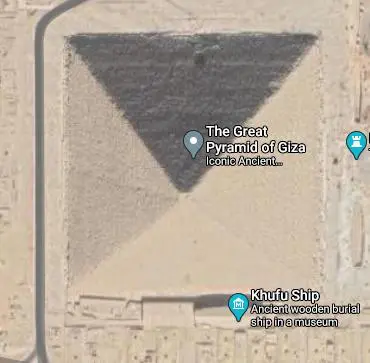
Several questions should be asked about the pyramids. E.g.:
- What was the purpose of such monumental constructions?
- When were they built?
- How were they built?
- Who built them?
In the following, some elements and possibilities will be pointed out to try to answer the profound questions about those achievements of our past.
What was the purpose of such monumental constructions? When were they built?
There are pyramids all over. The largest and more durably built are perhaps those of Egypt and America, in Mexico, and Central America in general. Some have pyramidal like shape, not exactly the geometric solid known as pyramid. This fact alone casts some doubt on the claim by the historians that the Giza Pyramid was built as a tomb for the pharaoh. This doubt is reaffirmed when we see and learn about, for example, the pyramid of Chichén Itzá (temple of Kukulkán), in Yucatan peninsula.
Megalithic structures and other ancient archaeological treasures
The temple of Kukulkán has four staircases, of 91 steps each, which in total sum 364. With the upper platform, it adds up to 365 in total. Each step represents the days of the Mayan Calendar. During the spring equinox, cast light and shadow movements, like a serpent, descend the steps of the Pyramid. It looks like a 120 ft length snake is creeping downstairs till it joins a huge serpent’s head at the bottom of the stairway. It appears for a few days around 4pm in March between 19th and 23rd (the dates for the spring equinox may change from year to year). But the light effect is most obvious on the actual date of the spring equinox.5
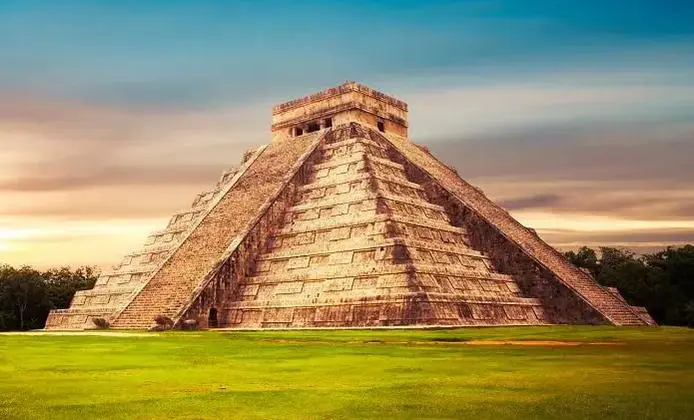
There are pyramids in Mexico, Guatemala, Peru, China, Tenerife (Canary Islands), Crimea, northern Italy, Bosnia, etc.
In Cambodia, the temple Nagkon-Wat (Angkor-Wat), is thought to have been built by Suryavarman II (1113-1150) as his capital6. However, Helena Petrovna Blavatsky (1831-1891) questions this statement, asking if it was not built by the same builders behind the Giza pyramid7.
The portuguese friar António da Madalena wrote in 1586 that such extraordinary construction is not possible to describe with a pen, particularly since it is like no other building in the world. That the stones, as smooth as polished marble, were laid without mortar with very tight joints that are sometimes hard to find. Further, he said that the blocks were held together by mortise and tenon joints in some cases, while in others they used dovetails and gravity. The monument was made out of 5 to 10 million sandstone blocks with a maximum weight of 1.5 tons each.

There are two access points to enter and exit the temple complex, one west with a sandstone causeway (built later) and one to the east, as well as four towers inside the temple complex indicating the four cardinal points8. The temple itself has brought many questions. Researcher Eleanor Mannika considers that Angkor-Wat is a solar temple, with a striking spring equinox alignment that marks both the beginning of a solar year and the beginning of a journey into the temple9. In this same book she explores the numerical and cosmological meaning behind the temple. Another finding worth emphasizing is that the Angkor-Wat temple’s main tower aligns to the morning sun of the Spring Equinox. According to the 13th-century Chinese traveller Zhou Daguan, some believed that the temple was constructed in a single night by a divine architect10.
A scientific expedition found a submerged pyramidal complex near Cuba11, another pyramidal complex (of crystal or crystal-like material) in the Bermuda triangle12. Certainly, the Yonaguni submerged monolithic structures13, near Japan, has not helped defend the official position of historians and other specialists in the history of human civilizations on the planet. It seems that things have not occurred exactly the way they are portrayed. The Yonaguni structures have caused quite a controversy. In a recent National Geographic documentary, experts take different positions, some even claimed that structures such as the ones shown have been caused by water erosion.14
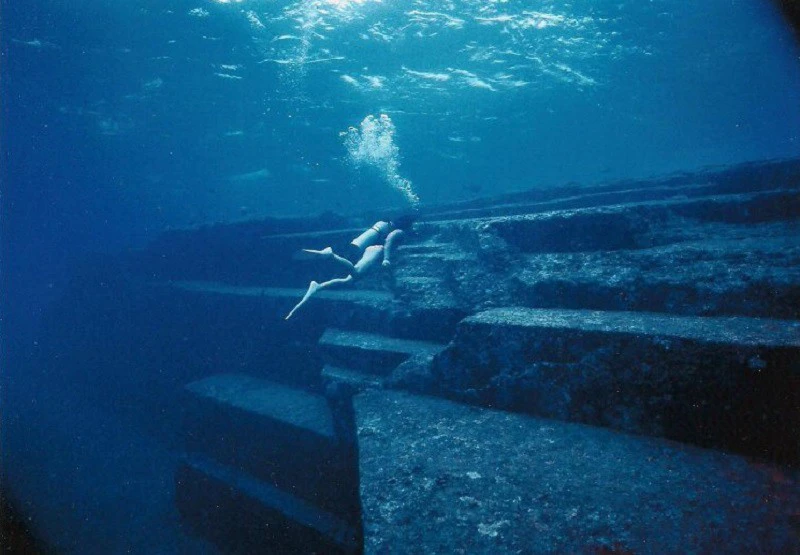
Let us also mention the Göbekli Tepe structures in Northern Mesopotamia, and the monolithic structures found submerged near Sicily, to name a few.
The fact that pyramids are everywhere indicates that they had something in common to many different kinds of human groups, in many different places of the planet. The precision of the cuts, the impossible placement of the rocks, the difficulty lifting those huge stone blocks even with modern cranes. Perhaps it is time to pay more attention to the so-called legends, preserved by word of mouth, in the memory of the peoples.
All of those examples point to the existence of human knowledge and civilizations much older and extensive than what is recognized by conventional science and authorities.
The pyramids of Giza are much older
Geologist Robert M. Schoch15, professor from Boston University, has done extensive research on the Great Pyramid and other ancient structures in Egypt, and has come to the conclusion that there are several eras of construction in Egypt, and some of the main constructions are far older than it had been thought. Professor Schoch was introduced to John Anthony West (the author of Serpent in the Sky), who was searching for someone that could scientifically prove the significant weather and rain erosion of the pyramids. This started a fruitful collaboration, which resulted in a documentary on the Sphinx water erosion hypothesis.16
Robert Schoch has mentioned the influence of his grandmother’s (who was a theosophist) library in his attitude to keep an open mind and always follow the evidence where ever it leads. When little, he used to read from her library, and held conversations with her. In his own words, reading theosophical works allowed to expand the horizon, and to see that perhaps the dogma of the day is just that, the dogma of the day.17 He admits that when he first went to Egypt, he thought that he would prove John A. West wrong, but shortly after seeing the Sphinx he changed his mind. The Sphinx is part of the Great Pyramid Complex, the head faces east, the rising sun. His research of the Sphinx lead him to the conclusion that the accepted geological dating was not correct. The vertical erosion marks present in the Sphinx enclosure can be made only by precipitation coming from above, not from water coming from below, he explains. This, he concludes, must have occurred before the end of the Ice Age, which ended in 9700 BC.
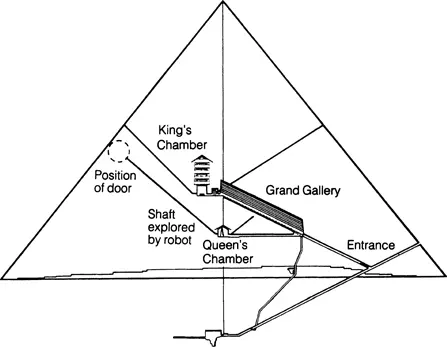
Researcher Robert Bauval has introduced the Orion Correlation hypothesis, which states the relative positions of the three main Giza pyramids match those of the three stars of Orion’s Belt and that the match would have been most precise around 10500 BC, when Orion last reached its lowest point in the sky as part of its periodic ascent and descent resulting from precession. He proposes that the Giza site was laid out (and the Sphinx carved) at this time, the Age of Leo, that is thousands of years before the reign of the Fourth Egyptian Dynasty of pharaoh Khufu.18 Bauval has highlighted that the pyramid of Giza is an extraordinary monument, which is totally outside the realm of classical archeology as it is a legacy from an unknown source, anonymous, and is talking to us in prime numbers, in universal constants and in astronomical concepts.19
H.P. Blavatsky considered the Great Pyramid to be a place of initiation, serving as a temple for important ceremonies. She has stated that the Great Pyramid was built ages before [Khufu] and he only desecrated it by giving it another use. In his day no more initiations took place in it and he consecrated it to Tet, or Seth-Typhon [the opposite pole to Thoth]. She links the Pyramid with the Egyptian Temple of Dendera, some 270 miles south of Giza, and states that since the two Dendera zodiacs show – among other things – the passage of three precessional cycles, or about 78,000 years, the possibility that the Pyramid is of a similar age is worth serious consideration.20
How long did the construction last?
The Great Pyramid is estimated to weigh approximately 6 million tonnes, with about 2.3 million blocks of limestone and granite, some weighing as much as 80 tonnes21. According to a modern construction management study22, it was estimated that the total project required an average workforce of about 14,500 people and a peak workforce of roughly 40,000. Without the use of pulleys, wheels, or iron tools, they used critical path analysis methods, which suggest that the Great Pyramid was completed from start to finish in approximately 10 years at a rate of up to 3 blocks per minute on certain levels.
Let us revise these statements and numbers. First, it would be very interesting to see how they managed to put blocks weighing several tonnes at a rate of 3 per minute. If you have ever observed modern crews working with cranes, to put in place big weights, you understand that 3 such blocks per minute is just impossible, for modern crews.
This would make it even more difficult, the precision of colocation, the precision of stone cutting, how it must be positioned to fit exactly where, in what order. I will allow myself to play with numbers a little here: 2.3 million blocks of stone, assuming they were able to put in place one stone block every 30 minutes, or two blocks per hour. That means, at this rate, to obtain the total labor time we must divide 2.3 million by two. This yields 1 150 000 (one million one hundred fifty thousand) hours. Assuming they were able to sustain this rate of work (of two stones per hour) during sunlight, 12 hours a day, 6 am to 6 pm. Then, 1150000 ÷ 12 = 95 833.333 days. How many years is this? 95833 ÷ 365 = 262.556164… years. This is non-stop, no accidents, no mistakes, no stone blocks falling on anybody’s heads and cracking some already built part, a constant flow and coordination for that period. All this precision for 262 years. At the end of these years, the pharaoh in charge probably didn’t even remember what the task was about. Suppose they worked even faster, say, four blocks per hour. One block every fifteen minutes, extreme precision, great weather during all this time, no accidents, perfect coordination of all parts involved. This will still give us about 131 years. Which means that the pyramid, if meant to be a tomb, was already planned several generations earlier, for the grand or great grand child at the throne in that future moment of his death. None of this makes much sense, numerically speaking.
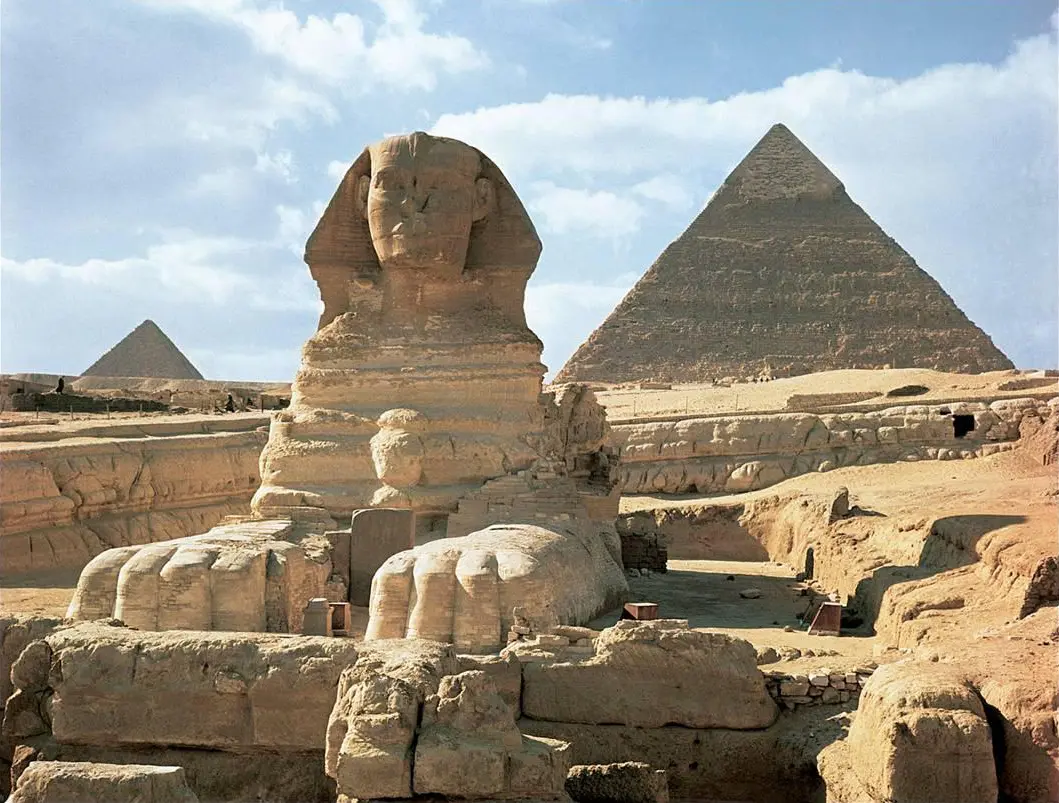
How were the pyramids built? Who built them?
In the following some important numerical and astronomical facts are highlighted in order to understand better the intent and knowledge of those, who are behind the construction of those magnificent monuments
An eon is, in earthly years23 (verbatim quote: Cyclical activity dominates all processes. When the history of mankind’s development is published one day, the public will learn about the true historic epochs. A surprise awaits them: astronomers will be able to use celestial mechanics to calculate exactly the determinable dates of past events24) 4320 million years. Let us designate it with the symbol ε, thus ε = 4 320 000 000 years = 4320 million years.
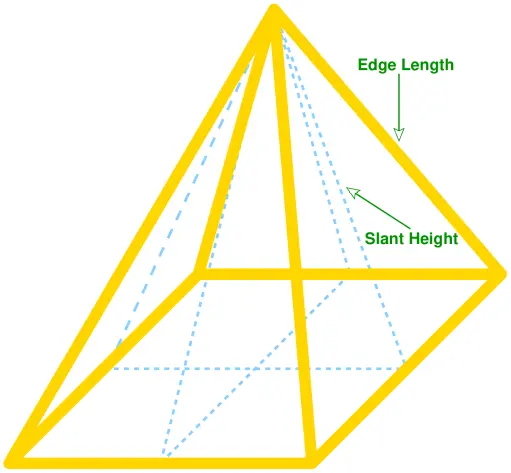
Our physical planet Earth has the following measurements:25
Equatorial radius R = 6378.137 km = 6378137
Polar radius (from the plane containing the equator to the pole):
P = 6356.752 km = 6356752 m
therefore the equatorial circumference is
Also, the Great Pyramid has the following measurements:26
The length of one of the four sides of the base is
The height of the pyramid is
therefore the base perimeter is
and after some computations,
its slant height and edge length
Now we can entertain these computations27:
Notice now that is remarkably close to 2π, that is, the ratio of the pyramid base perimeter to its height is extremely close to 2π.
The square root of the area of the triangular pyramid face is thus 146.56805, very close to the pyramid height of 146.7 m, with an accuracy of 13 cm 19.4 mm.
which differs from the height of the Great Pyramid by just 44 cm and 7 mm. That is, if we divide the polar radius of the planet by 43200 we obtain the height of the pyramid, with an error less than 45 cm.
which differs from the base perimeter of the pyramid by 6.3024 meters, or 6 m 30 cm 24 mm. That is, if we divide the equatorial circumference by 43200, we obtain the Giza Pyramid base perimeter.
that is, the ratio of the slant height to one half the side base length is extremely close to the golden ratio28.
Items 3) and 4) above indicate to us that the pyramid can be seen as a model of the planet, first projecting it’s surface onto an inscribed pyramid whose base lies on the equatorial plane, and its apex coincides with the north pole, then reduced by a scale of 43200:1 – that is, any length has been shrunk through division by 43200, or multiplication by a factor of . This would be the shrinking factor. However, this model should not be taken too far, since the cardinal points can not be assigned to the pyramid faces following this projection.
Considering that the physical planet is not a perfect sphere, but just spheroidal, and therefore the equatorial radius and the polar radius can not provide exact values for π if we use formulas for spheres and circles, the obtained results are even more remarkable. Perhaps would pay to use the sphere circumscribing the planet, or perhaps other considerations were made, say, the values corresponding to the etheric envelope of the planet. Of course, once the pyramid stands on the surface of the planet, cardinal directions make complete sense. These are very mind boggling facts, if we were to adhere to the opinion of the egyptologists, that ancient Egyptians were clueless, had little idea of the surrounding world, didn’t even know the wheel. A much more sane hypothesis would be that the ancients, at least the pyramid builders, knew much more than we think, probably much more than we ourselves now know. They knew the size of the planet, the fact that its shape is spheroidal, almost a sphere. They knew about the constant obtained by dividing the circumference by the diameter of a circle, that is, what we now call π.
Item 5) shows the golden ratio present in the Great Pyramid with high degree of exactitude.
Regarding the shrinking factor, 43200, it appears in different places, apparently unrelated. For example, according to hylozoics, an eon is the most comprehensive of the solar systemic cycle, equal to 4320 million years.29
In the book Secrets of the Great Pyramid, by Peter Tompkins, many other numerical statements and findings about the Great Pyramid not widely known are made. Some of the numerical statements will be only briefly described here, without any computations done, since it seems that there is no real agreement as to what a royal egyptian cubit was, etc. In addition, the numbers commonly used to indicate the measures in meters of the Giza Pyramid, when translated and examined into royal cubits, do not seem to agree. For example, if we work with the height value of 146.7 m, equal to 280 rc, and thus , then in this case the length of the base side of 230.34 meters would be which is not 440 royal cubits as claimed by the same source. Thus, the sum of the diagonals indicates the time it takes the earth to make a complete rotation of its axis, the King’s Chamber and its coffer were built considering the golden ratio and Pythagorean triples (in extended form, that is, not only integers) [ 2, 3, 4 ] ; [ 2, 4, ], etc. Still, Peter Tompkins conveys a lot of interesting information of historic character. For instance, the story of Costworth, who found a shadow floor around the Pyramid, whose geometric pattern could be used to measure the daily shadow of the Pyramid along the meridian at noon.
In his book The Great Pyramid. Observatory, Tomb and Temple30, English astronomer Richard Anthony Proctor objects the “tombic theory”, and called attention to the fact that the Pyramids were built on special astronomical principles, and how the Grand Gallery could have been used for accurate astronomical observations. In 1934 the astronomer Eugene Michel Antoniadi agreed that these observations from the Giza Pyramid was all that was required to construct a star map or planisphere. Similar conclusions are arrived to when examining the Temple of Karnak, and the Mexican pyramids. It appears that knowledge of the planet and its position, trajectory, astronomical in general, was not scarce at all in those times.
These facts alone point to builders that had a profound mathematical and astronomical knowledge, including an understanding of our physical planet earth dimensions, the spherical crust on which we humans spend most of our lives. These builders most likely used construction methods unknown to us now. In the following some possibilities are pointed out.
The vril – The potency of sound
The case of John E. W. Keely

John Ernst Worrell Keely (1837-1898) was a unique inventor, who has unsurprisingly also been accussed by conventional scientists of being fraudulent in his work. While pursuing experiments with vibrations, in the year 1872, Keely accidentally discovered an energy whose origin he could not explain. It took six years before he was able to produce it at will. Once, under close inspection of several observers, among which were trained specialists, he evolved almost instantaneously a substance having an elastic energy varying from 10000 to 20000 pounds per square inch, instantly releasing it into the atmosphere, without the evolution of heat in its production, or of cold during its liberation. During ten years his demonstrations were confined to the liberation at will of this force or energy. The following is a description of an actual experiment.
In November 1884, Mr. Keely obtained a standard for progressive research in the success of an experiment, which he had tried many times before, without arriving at the result that his theories had led him to expect. One of those present, at the time that this test was made, afterwards wrote to Mr. Keely, to obtain an explanation of the dynamic force which had been witnessed, causing a small globe to rotate when two persons had taken hold of the rod together, with a firm grasp; one of whom was standing on a circular sheet of metal, from which piano wires stretched towards the globe, near enough to touch one of the plates of glass which insulated the ball. Mr. Keely replied,
"I can not describe it other than the receptive concussion of the two forces, positive and negative, coming together, seeking their coincidents and thus producing rotation by harmonious waves, not streams. You ask if sound waves had anything to do with the motion of he globe? Nothing, the introductory settings are entirely different. The ball ceased to rotate when I took your left hand in my right hand, while with our other hands holding the iron rod resting on the metal plate, because the receptive flows became independent of the circular chord of resonation as set up mechanically. The power of rotation comes on the positive; and the power of negation
As is seen by the description above, Keely could start and stop the flow of force by touching the participants, but he could not go beyond that. According to H. P. Blavatsky, John W. Keely was working with etheric force.
Etheric matter is physical matter of a higher kind than visible, coarse physical matter. In the description of reality given by Pythagoras, physical matter has seven degrees or levels of density. In order starting from the lowest or densest: solid, liquid, gaseous, and the four more above them. These higher four include the etheric matter. For example, modern nuclear physics has reached somewhat to the fourth degree of physical matter, first etheric kind after the gaseous state.
H.P. Blavatsky states that had Keely been permitted to succeed, he might have reduced a whole army to atoms in the space of a few seconds as easily as he reduced a dead ox to the same condition. He was not allowed to succeed in his plans regarding the forces he had discovered that:
He was and would remain unconscious of the full range of his powers. . . . it was beyond his powers to pass to others that which was a capacity inherent in his special nature. … At any rate it exists in all those mortals whose inner selves are primordially connected, by reason of their direct descent, with that group of Dhyan-chohans who are called “the first-born of Ether.” … If the question is asked why Mr. Keely was not allowed to pass a certain limit, the answer is easy; because that which he has unconsciously discovered, is the terrible sidereal Force, known to, and named by the Atlanteans MASH-MAK, and by the Aryan Rishis in their Ashtar Vidya by a name that we do not like to give. It is the vril of Bulwer Lytton’s The Coming Race31, and of the coming races of our mankind*.32
Blavatsky considered Keely to be gifted from birth and asserted that “the discoveries made by him will prove wonderful – yet only in his hands and through himself… no one, who should have repeated the thing done by himself, could have produced the same results.”33
In the book The Secret Doctrine, Volume I, Cosmogenesis, by H.P.Blavatsky, the Tenth Section of Part III is titled “The Coming Force”. Blavatsky says that Sound is a tremendous occult power, whose smallest potentiality when directed with occult knowledge could never be counteracted by the electricity of a million of Niagaras. Sound may be produced of such a nature that the pyramid of Cheops would be raised in the air34.
Experiments have been conducted and video recorded by different people, where sound waves actually create patterns, move objects, etc35. Small objects are shown to levitate under the effect of sound. For instance, there is a report from a Swedish doctor, Jarl, who in a trip to Tibet around the year 1939 witnessed how trumpets and drums were placed in a specific geometric pattern and during some time they were lifting and transporting stone blocks at a rate of 5 or 6 per hour by means of the sound generated by the instruments36.
The case of Edward Leedskalnin
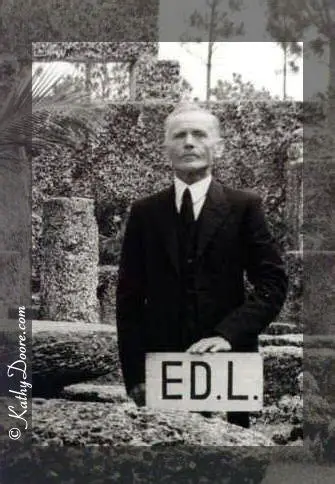
Edward Leedskalnin (1887-1951), an immigrant from Riga, Latvia, was a self-taught engineer, who built an incredible monument, the Coral Castle37. It took him from 1923-1951 to complete. Single-handedly and secretly he carved over 1,100 tons of coral rock, with an unknown process that has created one of the world’s most mysterious accomplishments. There is a Polaris telescope and functioning rocking chairs – all made entirely of stone. Edward would only say that he knew the secrets used to build the ancient pyramids and if he could learn them, you could too achieve similar results. He first built it in Florida City, a small, isolated town at the southern tip of Florida. To ensure total privacy, he worked only at night, and filled in the cracks between the stones in the wall – the largest stone weighed 29 tons – with smaller stones so no one could see in during the day. In 1936, Leedskalnin, concerned about the growth of Florida City, decided to move the castle 10 miles north to Homestead. It took Leedskalnin – who was only about 5 feet tall and 100 pounds – three years to move the castle piece by piece. As one story goes, Leedskalnin pulled into a local quarry one night to buy several tons of coral. When the foreman asked how he planned to load the coral into his old truck, Leedskalnin asked the man to turn his back. A few minutes later, the foreman turned around and was astonished to see Leedskalnin sitting in the truck with the coral fully loaded.

The sculptures Leedskalin crafted are no less impressive than the stories behind them. At the entrance to the Coral Castle of Florida, an inscription greets visitors: “You will be seeing unusual accomplishment.” And as promised, the site is full of magnificent sculptures, including a 9-ton gate that once moved with just the touch of a finger and rocking chairs made entirely of stone.
The case of John Hutchison

A Canadian self-taught scientific researcher, John Hutchison38, in 1979 stumbled upon what was to be known as “the Hutchinson effect” while experimenting with Tesla coils. He was able to observe levitation of heavy objects, metal becoming transparent, metal turning into jelly, spontaneous fracture of metals. The Hutchison Effect has been well documented both on film and videotape, and has been witnessed many times by numerous credentialled scientists and engineers. His findings have been televised in the U.S., Japan, and Canada. They have also piqued interest from electrical engineering, aircraft companies, the Canadian Department of Defense, and the military. His work has been linked to energy weapons, 9/11, to mention a few. He has also mentioned of being successful in recreating the famous Philadelphia incident, or Philadelphia Experiment (1943).39
Some of the effects of the pyramid
Several experiments have been conducted with Great Pyramid replicas in order to establish the effect of the pyramid and its special measurements. In the book The Secret Power of Pyramids, by Bill Schul and Ed Petitt40, many different phenomena are described, original experiments with pyramids, mathematical relationships, etc. The important thing is that in all cases, the pyramids used in experiments were modeled after the Great Pyramid, that is, they were all reduced in size, but maintaining the proportions of the composing parts, and alignment with respect to the cardinal points.
As we will describe in the following chapters, the activity within the pyramid form apparently parallels a wide range of paranormal phenomena41: treatment and purification of water, used subsequently in healing of people and plants, psychic healing, transcendental states, accelerated growth rate of plants within the pyramid, plants gyrating in a symphonic dance when inside the pyramid: The plant followed a east-west cyclic movement. It bowed to the east nearly touching the base, swept a semicircle to the south and back to the west and finally straightened to the vertical before starting the dance once more. The movement was repeated every two hours42.
Our experiments, ‒ he concludes ‒ seem to indicate that there is some sort of cosmic wind blowing in from the west. Aluminum and magnets seem to intercept this wind or energy flow, property which they appear to loose after a period of exposure within the pyramid. Also, it was reported that plants closest to the apex had the fastest growth rate. Energy concentration and other anomalies seem to be associated with the apex of the pyramid. Food (eggs, milk, calf liver, tomatoes, etc) inside the pyramid does not rotten, for example milk becomes creamy yogurt, while similar control food left outside goes bad as usual. A strip of brass placed within the pyramid was observed to be repelled and attracted to the finger, with some of the change occurring under the influence of thought43. In his book, Bill Schul explains that he was not able to duplicate this experience.
Several dowsers, radiesthesia researchers, have established the presence of energy vortex at the apex of the pyramid replicas. There are reports of people who have experienced relief of their ailments (tooth abscess, sprain, infections, etc) after shorts periods of pyramid immersion. In another case, a person spent several minutes in a pyramid and had to step out as he became dizzy. The strange feeling stayed with him after he returned home. He canceled out on a party and instead took a nap – when he awakened three hours later felt like he had slept for days44.
Bill Schul also describes experiencing altered states of consciousness within the pyramid. From his description, his experience seems very close (if not exactly that) to what is in modern times (end of XX, and XXI centuries) known as remote viewing. While inside his plastic replica, he visited the Great Pyramid, was in the King’s Chamber, and interacted with entities.45
Conclusion
Sound vibrations drive different kinds of matter into their appointed place, to assume their appointed forms46.
The explanation of the Giza Pyramid origin and purpose that seems more likely, is that it was built by, or with the direct assistance of members of superhuman kingdoms, that is, monads that in their evolution of consciousness have trascended the worlds of man – cosmic worlds 49, 48, 47 – ,47 thus being able to use forces and laws of nature, whose effects would appear to be miraculous or inconceivable to humans, especially those who believe that they know all that is to be known. In hylozoics, the human kingdom is the fourth on the evolutionary arch of the human evolution line. A human monad has already passed through the mineral, vegetable and animal kingdoms. Still ahead, the superhuman kingdoms.
The Giza Pyramid and other monumental constructions such as the Temple of Karnak, the Mexican Pyramids, Machu Pichu, Angkor-Wat and others, were probably built during Atlantis, when the Fourth Root Race flourished. Some of these monuments are now at the bottom of the ocean (Yonaguni Ruins, sunken pyramids), some remain as silent witnesses, still unknown, of the past. It has also become clear that etheric currents follow special patterns within and near the Giza Pyramid and its proportionally built replicas.
Peter Tompkins Secrets of the Great Pyramid (1971), p.105 ↩︎
H. P. Blavatsky “Isis Unveiled”, V1, p 241 (Pasadena, California, Theosophical University Press, 1998 – faithful reprinting of the 1887 original edition in New York) ↩︎
Eleanor Mannika Angkor Wat – Times, Space and Kingship (University of Hawaii Press, 1996) p 129 ↩︎
Zhou Dauan, visited Angkor in 1296-97 and wrote A Record of Cambodia: The Land and Its People after his return to China: Cambodia: CITY OF THE GODS ↩︎
Cuban underwater formation, The Mystery of the Submerged Pyramids of Cuba, Lost city found beneath Cuban waters ↩︎
National Geographic documentary The Legend of Atlantis (segment between minutes 15 and 17) ↩︎
Documentary The Mystery of the Sphinx (1993) ↩︎
Joe Rogan Experience #1124 - Robert Schoch Explains Sphinx Water Erosion Hypothesis. From JRE Clips, (partial) interview transcript ↩︎
Robert Bauval, Adrian Gilbert “The Orion Mystery: Unlocking the Secrets of the Pyramids” (1995) ↩︎
Robert Bauval lecture What is the Purpose of the Great Pyramid? (2017) ↩︎
David Pratt The Great Pyramid (part 1, part 19), H.P. Blavatsky Collected Writings (published in 1969), 4:287 ↩︎
Craig B. Smith Project Management B.C. in Civil Engineering Magazine (June 1999), vol 69 nr 6 ↩︎
Basic Esoteric Dictionary at laurency.com; also in Henry T. Laurency Knowledge of Reality, 2.12.8 – an eon is said to be the most comprehensive solar cycle, and is equated to the same number, 4320 million years. ↩︎
Henry T. Laurency Knowledge of Reality, 2.12.9 ↩︎
These computations have been made using a precision of 20 places after the decimal point. ↩︎
Two positive quantities a, b where (a > b) relate to one another in a golden ratio a:b if and only if a:b = (a+b):a. This golden ratio is by custom denoted with φ, and from its definition it is found to be (1+√ 5)÷2, or 1.61957… ↩︎
The most comprehensive of these cycles, the solar systemic cycles, are called eons (4320 million years) – Henry T. Laurency Knowledge of Reality, 2.12.8. ↩︎
Richard Anthony Proctor The Great Pyramid: observatory, tomb, and temple (1888) ↩︎
H.P. Blavatsky The Secret Doctrine, V1, Cosmogenesis, (Theosophical University Press. Pasadena, California, 1999. A photographic facsimile of the original edition of 1888), pp 555-563 ↩︎
Theo Paijmans Free Energy Pioneer: John Worrell Keely (2004), p 182 ↩︎
H.P. Blavatsky The Secret Doctrine, V1, Cosmogenesis, (Theosophical University Press. Pasadena, California, 1999. A photographic facsimile of the original edition of 1888), p 555 ↩︎
Amazing Resonance Experiment!, Sound - Vibration, Frequency, Wavelength ↩︎
Coral Castle Museum. 28655 South Dixie Highway. Miami, FL 33033. ↩︎
Hutchison Effect, Johnk Hutchison blogspot, Dr. Judy Wood, Coast to Coast ↩︎
Bill Schul and Ed Pettit The Secret Power of Pyramids (1975) ↩︎
Ibidem, page 50 ↩︎
Ibidem, page 63 ↩︎
Bill Schul and Ed Pettit The Secret Power of Pyramids (1975), pp 108-109 ↩︎
Ibidem, page 143 ↩︎
Ibidem, Chapter Ten ↩︎
Cosmic Intelligence and its Manifestation in the Solar System, in the Planets, and in Man presented by Lars Adelskogh (A Hylozoic Paraphrase of, and Commentary on, A Treatise on Cosmic Fire by Alice A. Bailey and D.K.), 3.9.11, p 77 ↩︎
For more details on the Teachings of Pythagoras, please see laurency.com ↩︎
